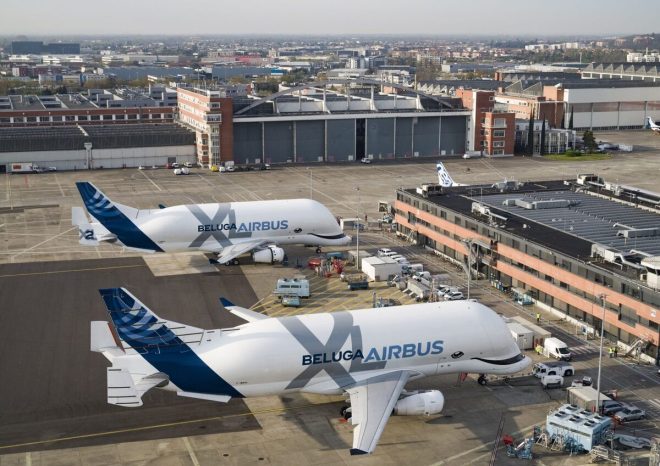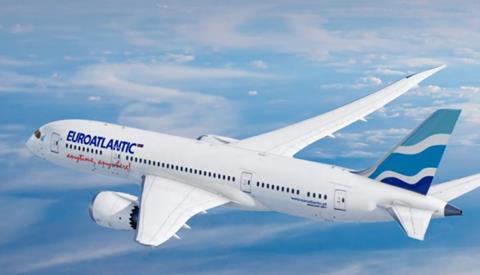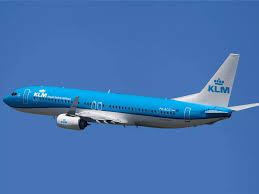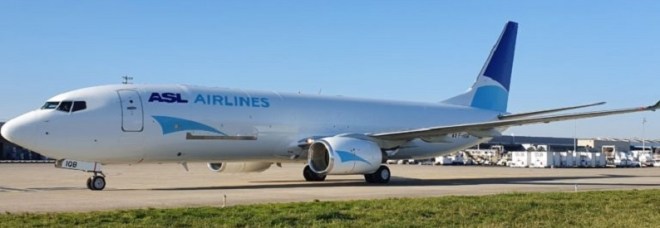On The Boeing Front
Boeing Delays 737 Max 10 Deliveries to 2023
Boeing has further delayed its 737 Max 10 program by two years, with deliveries of the largest variant of its re-engined narrowbody now scheduled in 2023. The company also now expects to deliver the first 737 Max 7 this year; that milestone was previously anticipated last year.
Boeing disclosed the tweaked timelines in its latest annual report, made public on February 1. Several days earlier, during Boeing’s January 27 earnings call, the company said it pushed back the first 777-9 delivery from this year to 2023.
“We now anticipate that the first 737 Max 10 and the 777X delivery will occur in 2023,” Boeing’s securities filing says. ”This schedule reflects a number of factors, including an updated assessment of global certification requirements informed by continued discussions with regulators and resulting in a management decision to make modifications to the aircraft’s design.
Boeing has disclosed it is modifying the 777-9 due to certification requirements but has not mentioned Max 10 design changes. However, recent document from the European Union Aviation Safety Agency (EASA) says the Max 10 will receive an angle-of-attack AoA) sensor” integrity enhancement”—essentially a means of reducing the risk from failure of one of the two AoA sensors.
Boeing rolled out the first Max 10 in November 2019. The Jet’s differences from its smaller siblings include longer landing gear, which ensures appropriate clearance between the rear fuselage and the ground during take-off rotation.
Source: Boeing/Picture Boeing
ON THE AIRBUS FRONT
Airbus to Seek ETOPS Approval for the BelugaXL
Airbus is to seek extended twin-engined operations approval for the BelugaXL transporter, in order to support commercial services involving overwater flights. Three BelugaXLs based on the A330, have been built and introduced in October 2020. Another three will be built, the last two of which will have 180 min ETOPS approval, according to BelugaXL chief engineer Pascal Vialleton.
Vialleton disclosed the ETOPS plan during a Royal Aeronautical Society event on February 4th. He says Airbus wants to have the final two aircraft, due to arrive in 2022 and 2023, to have the flexibility to conduct transatlantic flights, to the possibility of satellite transport to launch stations in North America.
Vialleton says the current A300-600ST Beluga fleet will be phased out as the XLs arrive. Demand on the-600St fleet rose from 6,000h in 2014 to 8,600h in 2017, but the XL offers capacity relief because it is able to accommodate two A350 wings at a time. Each XL will operate about 1,000 flights and 1,700h per year.
The capacity strategy rather than the-600St’s age, says Vialleton, is the main reason for the fleet renewal: “We still can use the -600ST. But what to do with it?”
Airbus is looking to improve the XL’s capabilities following its entry into service in January of last year. Its original flight-test aircraft will become part of the operational XL fleet, says Vialleton, but is likely to be the last to be introduced, joining once its on-board test instrumentation has been removed.
Source: Airbus/Picture Airbus
REGIONAL/BUSINESS JETS
Gulfstream to Expand Appleton Completions
Gulfstream Aerospace is expanding and renovating its completions facility in Appleton, Wisconsin, as part of a larger effort to modernize its facilities and enhance customer support.
The Savannah, Georgia-based airframer will add more than 13,000 sq ft to its completions hanger at Appleton International Airport, bringing the facility to 126,500 sq ft. The improvements will also include upgrading the future finishing shop, consolidating back shops for improving workflow, and enhancing the shipping and receiving areas. Along with the expansion, Gulfstream expects to add 200 new jobs.
“This expansion is another effort in our long-range plan to upgrade and modernize Gulfstream facilities to further support our customers,” said Gulfstream president Mark Burns. ” Enhancing the Appleton completions operations is in line with Gulfstream’s culture of continuous improvement.” Gulfstream expects the project to be completed in the third quarter of this year.
Source: Gulfstream/Picture Gulfstream
Nigeria’s Air Peace Takes First E195-E2
Air Peace took delivery of its first of 13 firm ordered E195-E2s, it was formerly handed over to the Nigerian carrier on January 27, 2021, at Embraer’s site at Sao Jose dos Campos.
“The E195-E2 is the perfect aircraft to expand our domestic and regional operations. The E195-E2 aircraft will further help us actualize our ambition of connecting not just the whole of Nigeria, but the entire African continent, while feeding long-haul flights from our Lagos hub,” Chairman and Chief Executive Allan Onyema said.
Besides a further twelve units on firm order, the Nigerian carrier also holds purchase rights for seventeen additional regional jets. The carrier also operates eight E145s (operated by its regional Air Peace Hopper), one Do328-300 for Vip charters, eight B737-300s, five B737-500, one B777-200ER, and two B777-300ERs.
Air Peace will become the second operator of the E2 aircraft since the outbreak of the COVID-19 Pandemic, following Belavia which took its first E195-E2 in December 2020.
Source: Embraer/Picture Embark
OTHER AVIATION NEWS
RAF Welcomes Fifth Poseidon P-8A at Lossiemouth Base
The UK Royal Air Force’s (RAF’s) P-8A Poseidon MRA1 maritime patrol aircraft fleet has been boosted by the arrival of its fifth example of the adopted Boeing 737NG.
Named Fulmar, aircraft ZP805 touched down at the service’s Lossiemouth in Scotland on February 2, following an 8h-plus delivery from Boeing field near Seattle.
The service notes that this represents the first time an RAF Poseidon has been delivered to Scotland straight from the factory”.
“The arrival of this latest aircraft helps to ensure that we have the continued capability to defend our waters and support our NATO partners,” says the RAF, which notes that it also “ comes at a time of unprecedented submarine activity close to UK waters”. A total of nine Poseidon MRA1s will be introduced, with the type operated by 120 Sqn.
Source: Flightglobal/Picture Crown Copyright
EuroAtlantic’s First 787 a former Aeromexico Jet
Portuguese wet-lease specialist EuroAtlantic Airways has identified a former Aeromexico Boeing 787-8 as the first example of the twinjet to be introduced to its fleet. EuroAtlantic disclosed last year that it planned to acquire two used 787s for 2021, through an agreement with lessor AerCap.
Cirium fleets data shows that the aircraft has been operated by Aeromexico since being delivered to the airline a little more than seven years ago, in August 2013. It lists the aircraft as being due for transfer to EuroAtlantic in the middle of this month. AeroMexico has been operating the 787-8 with a 243-seat layout.
EuroAtlantic will become the first airline in Portugal to introduce the 787. The fleet includes the Boeing 777-200ER, 767-300ER and 737-800.
Source: EuroAtlantic/Cirium/Picture EuroAtlantic
KLM Makes First Regular Flight With Sustainable Synthetic Fuel
Air France-KLM’s Dutch arm operated a passenger flight from Amsterdam to Madrid that the carrier says was the first in the world to use sustainable derived synthetic aviation fuel. The Boeing Co. 737-800 narrow body plane carried 500 liters of fuel produced by Royal Dutch SellPlc, equating to more than 5% of total requirement for the trip, KLM said in a statement.
While flights partly powered by plant-derived biofuels have become commonplace as aviation seeks to reduce its reliance on fossil fuels, fully synthetic propellants have taken longer to develop. KLM said the Madrid flight, which took place on January 22, was groundbreaking in combining carbon capture with solar and wind power to produce a fully sustainable kerosene substitute.
“ The introduction of sustainable aviation fuel is very important to us,” KLM Chief Executive Officer Pieter Elbers said in a webinar on SAF, where news of the flight was disclosed. ”The captain informed the passengers that this was a big step for the industry. They didn’t notice any difference.”
Fuel for the KLM flight was produced in a Shell lab using carbon dioxide captured from Europe’s biggest oil refinery in Pernis, near Rotterdam, and from a cattle farm in the northern Netherlands.
Source: KLM/Picture KLMs
LATEST NEWS
- Singapore Airlines has made significant changes to its order book by swapping Boeing 787-10 for more 777-9s in a move that sees it defer more than $3.01 billion in capital spending by about three years.
- French Shipping Giant CMA CGM French logistics and sea transport firm CMA CGM is branching into air freight operations, with the acquisition of four Airbus A330-200Fs.
- Copa Airlines of Panama announced of February 11 that it expects to receive 8 Boeing 737 MAX planes this year.
- Pilatus hands over the first Pilatus PC-24 with a higher-density, 10-seat configuration to customer in the western United States in late January.
- TUI Fly Belgium on Wednesday February 17 became the first EU carrier to resume service with the Boeing 737 Max since its March 2019 grounding with a flight from Brussels to Alicante and Malaga, Spain.
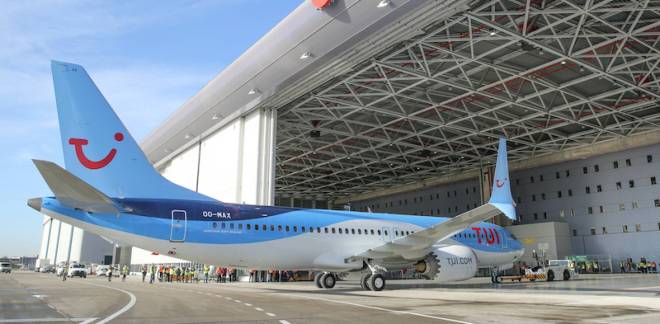
- Flydubai is to start the process of returning its Boeing 737 Max aircraft to service after the UAE General Civil Aviation Authority cleared the type for operations again.
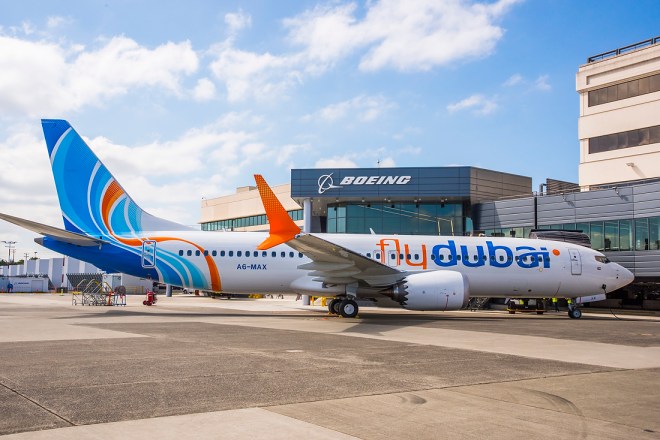
- S7 Airlines of Russia has taken delivery of the first of a pair Boeing 737-800 converted freighters.The aircraft are being leased to the airline by GECAS.
- Icelandair is optimistic that it will be able to start ramping its network in the second quarter of this year, and intends to return is Boeing 737 Max fleet to service in spring.

Source: GECAS, Flydubai, Copa Airlines, Pilatus, Singapore Airlines, Flightglobal
AIR CARGO
ASL Orders 10 More 787-800 Converted Freighters
Irish airline group ASL Aviation Holdings has ordered another 10 737-800 Boeing Converted Freighters, bringing to 21 the number of those jets it intends to acquire. The orders are conversions of previously held options. ASL, based near Dublin, took those options along side a firm order for 10 737-800 BCFs that it placed at the Paris air show in 2019. With the deal, Boeing holds orders and order commitments to sell more than 150 737-800BCFs, Boeing says.
ASL received its first 737-800BCF in January, placing that jet into service with subsidiary ASL Airlines France. It received a second 737-800BCF, which will be operated by K-Mile Asia, a Bangkok airport-based carrier co-owned by ASL.
“The aircraft offers an excellent option for our express-cargo customers, as they develop their networks to meet demand in the years ahead,” ASL chief executive Dave Andrew says. ” It is right-sized in payload And range.”
Boeing launched the 737-800 conversion program in 2016 with orders and commitments to sell 55 of the jets. Boeing modifies the aircraft to have main-deck cargo doors, cargo-handling systems and capacity to carry 12 pallets, in standard pallets and one half pallet. The 737-800 BCF can carry 23.9t of cargo and has,2,025nm(3,750km) range says ASL.
Source: ASL Aviation Holdings/Boeing/Picture ASL
OTHER NOTEWORTHY NEWS
US FAA Tracking All Boeing 737 MAX Aircraft Via Satellite Data
The U.S. Federal Aviation Administration (FAA) said on Friday February 19 it is tracking all Boeing 737 MAX airplanes using satellite data under an agreement with air traffic surveillance firm Aireon LLC based in McLean, Virginia. The FAA said that “ Aireon is providing the agency with ADS-B flight data for all Boeing 737 MAX aircraft.”
Aireon’s system will flag deviations from certain parameters during all phases of flight and alert the FAA’s aviation safety division. Safety engineers and inspectors will use the early notification to further analyze the incident,” the agency said. Boeing did not immediately comment.
The FAA 737 MAX monitoring began on January 29, Aireon Chief Technology Officer Vinny Capezzuto said during a February12 web event hosted by Aviation Week. You can literally monitor it on a situational awareness display and it has event detection tied into it,” Capezzuto said, adding the FAA can look for emergency codes and track other data. The system emails FAA”when events are detected and every day you get a report card on” data from flights from the previous day,” he said.
Source: Reuters/Picture Aireon
Boeing is Again Under the Microscope
When will the news media leave Boeing alone? It seems the company is always in the news, after February 20th engine failure on a United 777-200, the media is attacking Boeing again. The aircraft in question was delivered to launch customer United Airlines in 1995. When the the aircraft was built the -200, -200 ER and -300, they were offered with three engine options to customers with the PW4000 competing with Rolls-Royce Trent 800, and General Electric GE90. The PW4000 was offered to airlines as PW4073 to PW4084 (the engine that had the problem on the United flight was PW4077)
The Point to remember is that Boeing does not make or maintain engines. Boeing said there were 69 777s with Pratt & Whitney 4000-112 engines in service and another 59 in storage. United had 24 of these planes in service. For about the last 15 years, new 777s have all been delivered with GE 90 engines. So the grounding of the 777 only applies to the models, I mentioned at the beginning of this piece, the average person does not know this information.
Source: Ed Kaplanian
Researched and Compiled by :
Ed Kaplanian Commercial Aviation Advisor
Contact – ekaplanian@msn.com
Editor: Lee Kaplanian

